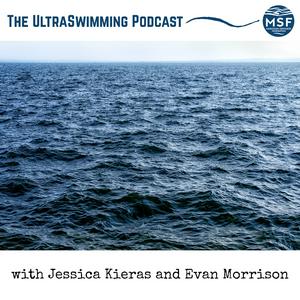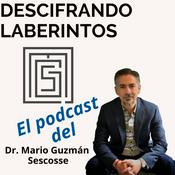Episodios disponibles
3 de 3
- Episode 2 - Organizing Independent Solo UltraswimsHave you ever found an interesting, beautiful body of water — on your travels or browsing internet maps, and wondered, what’s that like to swim across? Possibly you’ve wondered, what would it take to make it official — putting your swim on the map with the English Channel, around Manhattan, and other established ultraswims. If any of this sounds familiar, here’s a 91-minute episode just for you. MSF core team members Jessica Kieras and Evan Morrison discuss: - Sanctioned swims vs. self-organized swims - Finding inspiration for new swim routes - Technical aspects of repeatable route design - Why GPS tracks aren’t repeatable - Recruiting a support crew, boat pilot, and observers. - Tips and best practices for documenting solo ultraswims. Note, this episode includes visual features that are best viewed on the YouTube version.--------1:31:57
- Episode 0 – IntroductionsThis episode introduces the UltraSwimming podcast and its co-hosts, Jessica Kieras and Evan Morrison. They each provide a brief summary of their swimming backgrounds and projects they contribute to the overall marathon swimming community and the Marathon Swimmers Federation (MSF). The episode also includes a brief discussion of the terms "marathon swimming" and "ultraswimming" and what sets ultraswimming apart. A few links to projects mentioned in the episode: Marathon Swimmers Federation (MSF): marathonswimmers.org The Long Swims Database: longswims.com MSF Documented Swims: https://marathonswimmers.org/swims/ MSF News Blog: https://news.marathonswimmers.org/--------5:47
- Episode 1 - Karen Zemlin, Lake SuperiorIn this episode we discuss how Karen Zemlin envisioned, planned and completed a new 22.9 km (14.2 mile) route on Lake Superior, from Isle Royale, Michigan to Pigeon Point, Minnesota in 6 hours and 12 minutes on August 13, 2025. We talk about how this route differs from the already established east and west routes and what makes it an excellent addition to the options for ultraswims in the world’s largest lake. Karen shared with us how the unique geography of the lake contributed to an upwelling as she swam toward shore, resulting in a twenty degree temperature drop down to 46°F (8°C). We learned how she coped with the cold and how her crew supported her in completing the swim safely.--------1:05:11
Más podcasts de Salud y forma física
Podcasts a la moda de Salud y forma física
Acerca de The UltraSwimming Podcast
Conversations, stories, and ideas from the world of solo long distance open water swimming (UltraSwimming).
Sitio web del podcastEscucha The UltraSwimming Podcast, EresInteligente Podcast y muchos más podcasts de todo el mundo con la aplicación de radio.net

Descarga la app gratuita: radio.net
- Añadir radios y podcasts a favoritos
- Transmisión por Wi-Fi y Bluetooth
- Carplay & Android Auto compatible
- Muchas otras funciones de la app
Descarga la app gratuita: radio.net
- Añadir radios y podcasts a favoritos
- Transmisión por Wi-Fi y Bluetooth
- Carplay & Android Auto compatible
- Muchas otras funciones de la app


The UltraSwimming Podcast
Escanea el código,
Descarga la app,
Escucha.
Descarga la app,
Escucha.







































